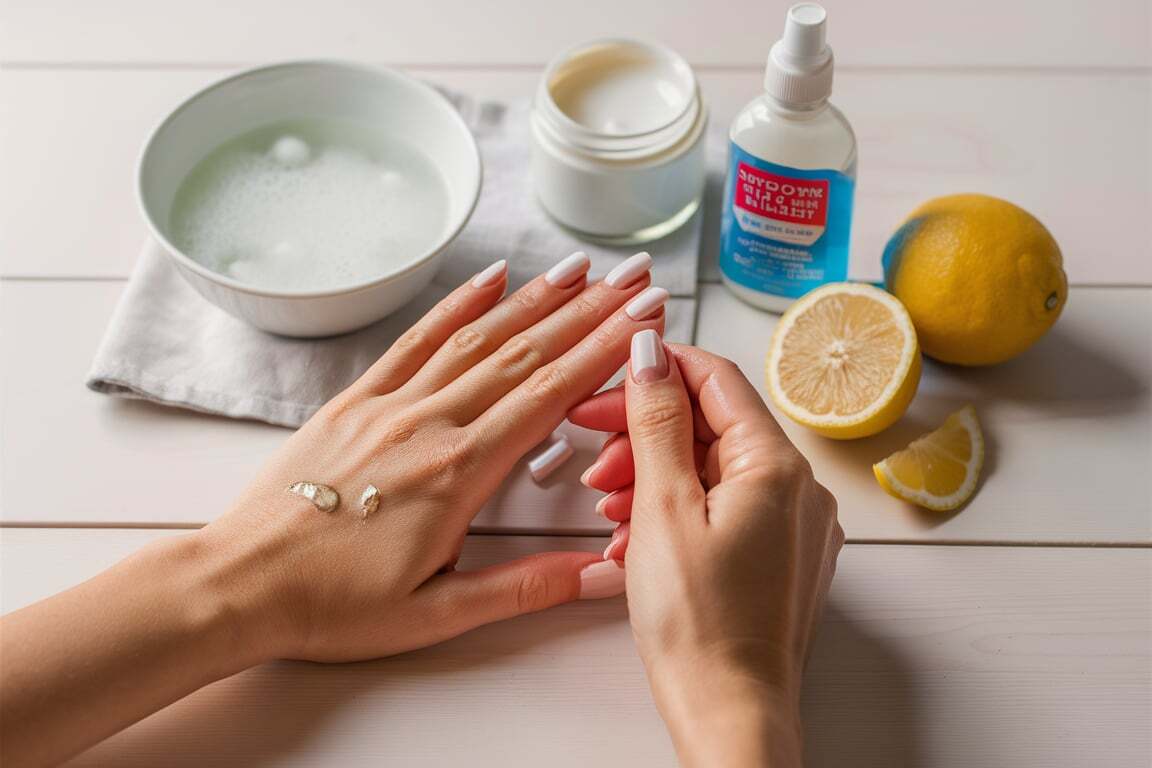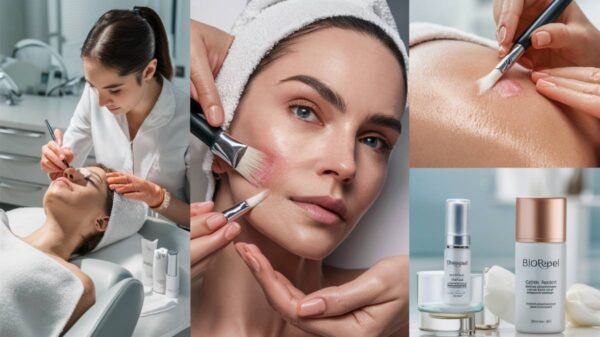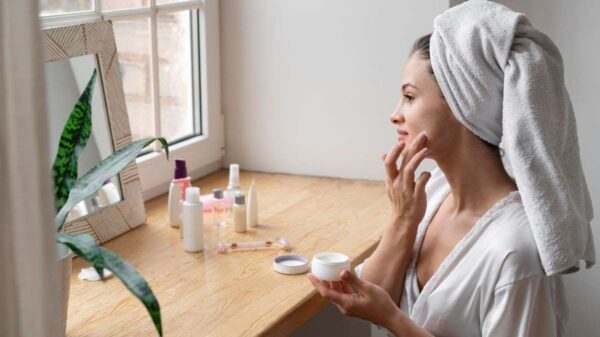Super glue, also known as cyanoacrylate, is a household essential known for its quick bonding strength and versatility in fixing everything from broken ceramics to securing small parts. However, this incredible adhesive can become a nuisance if it ends up on your skin. If you’ve ever found yourself in this sticky situation, don’t worry! Here’s a full guide on how to remove super glue from skin at home safely and effectively.
Why Super Glue Sticks So Well
When super glue comes into contact with moisture, it quickly sets into a strong bond. This makes it excellent for quick repairs, but it also means it can bond skin together quickly. While super glue is not typically harmful to skin, it can cause discomfort and restrict movement if not removed promptly. Understanding the chemical properties of super glue can help you appreciate why certain removal techniques are effective. Knowing how to remove super glue from skin using effective methods can alleviate discomfort and prevent potential skin damage.
Step-by-Step Guide to Removing Super Glue from Skin
Act Quickly but Calmly
If super glue spills on your skin, remain calm. Panicking and pulling can damage your skin. Instead, follow these steps methodically.
Soak in Warm Soapy Water
- Materials Needed: Warm water, mild soap
- Procedure: Fill a bowl with warm, soapy water.
Soak the affected area for about 10-15 minutes. This helps to soften the glue and loosen its grip on your skin.
Warm, soapy water is often the first line of defense against super glue on the skin. The warmth and soap combine to soften the glue, facilitating its removal. For more stubborn glue, you may need to soak the area longer or repeat the process several times.
Gently Peel or Roll the Glue
- Materials Needed: A soft cloth or a blunt edge (like the edge of a spoon)
- Procedure: After soaking, gently try to peel or roll the glue off your skin.
Do not force it; if it’s not coming off easily, proceed to the next steps.
It’s important to be gentle during this step to avoid damaging your skin. Instead of peeling, you might find it easier to roll the glue off, which can reduce the risk of skin irritation.
Use an Acetone Based Nail Polish Remover
- Materials Needed: Acetone-based nail polish remover, cotton ball or swab
- Procedure: Dip a cotton ball or swab in acetone-based nail polish remover.
Apply it to the glued area, allowing it to sit for a minute or two. Acetone helps to break down the cyanoacrylate, making it easier to remove the glue. Use the moistened cotton ball to gently massage the region to aid in the glue’s dissolution.
Acetone is a potent solvent that can remove superglue with ease. However, because it can be harsh on the skin, it’s crucial to apply it sparingly and carefully. Avoid using acetone near sensitive areas like the eyes or mouth.
Note: Acetone can be drying to the skin, so use it sparingly and avoid it if you have sensitive skin or if the glue is near your eyes or mouth.
Try Petroleum Jelly or Vegetable Oil
- Materials Needed: Petroleum jelly or vegetable oil (olive, coconut, etc.), soft cloth
- Procedure: Apply a generous amount of petroleum jelly or vegetable oil to the glued area.
Rub it gently into the skin, which helps to loosen the glue. Continue massaging until the glue starts to come off.
Petroleum jelly and vegetable oils are excellent alternatives to acetone. They can aid in gradually disintegrating the glue’s adhesive qualities and are kinder to the skin. You may need to apply these substances multiple times for the best results.
Also Read: How to Use Frankincense Oil on Your Face?
Use Lemon Juice (for Sensitive Skin)
- Materials Needed: Fresh lemon juice, cotton ball or swab
- Procedure: Lemon juice is a natural alternative to acetone.
Apply some fresh lemon juice on a cotton ball and dab it onto the adhesive. Let it sit for a few minutes before gently rubbing the area to remove the glue.
Natural acids found in lemon juice can aid in the breakdown of super glue. This method is particularly useful for those with sensitive skin or for glue spots near sensitive areas.
Apply Moisturizer
- Materials Needed: Moisturizing lotion or cream
- Procedure: After removing the glue, wash your skin with warm, soapy water.
After patting the area dry, soothe the skin with a nourishing lotion or cream.
Moisturizing after removing super glue is crucial, as many removal methods can dry out the skin. A good moisturizer will help restore the skin’s natural barrier and prevent irritation.
Additional Tips and Precautions
To ensure you remove super glue from your skin safely and effectively, consider these additional tips and precautions:
- Do Not Pull: Avoid pulling the skin apart if glued together, as this can cause tearing.
- Avoid Heat: Do not use hot water, as it can cause burns, especially if the skin is sensitive.
- Protect Sensitive Areas: If super glue is near your eyes, mouth, or any sensitive area, rather than attempting to remove it yourself, seek medical attention
- Preventative Measures: Wear gloves when using super glue to prevent it from getting on your skin.
- Patience is Key: Some methods may take time to work. To prevent hurting your skin, take your time and be gentle.
Understanding Cyanoacrylate and Its Interaction with Skin
Cyanoacrylate, the main ingredient in super glue, polymerizes rapidly in the presence of moisture, including the moisture naturally present on your skin. This quick reaction is what makes super glue so effective, but it also means that accidents can happen. By understanding the chemical properties of cyanoacrylate, you can better appreciate why certain solvents like acetone and natural oils work to dissolve it. Knowing how to remove super glue from skin using these solvents can help you effectively manage and resolve these sticky situations.
When to Seek Medical Help
While super glue on the skin is generally not a medical emergency, there are instances when you should seek professional help:
- Sensitive Areas: If the glue is in your eyes, mouth, or other sensitive areas, do not attempt to remove it yourself. Seek medical attention immediately.
- Severe Reactions: If you experience a severe reaction such as redness, swelling, or pain, it’s important to consult a healthcare professional.
- Large Areas: If large areas of skin are glued together and you cannot separate them safely, professional medical assistance may be required.
Also Read: Sensitive Skin Care Routine | A Comprehensive Guide
Preventative Measures
To avoid future incidents, consider these preventative measures:
- Work in a Well-Ventilated Area: Make sure you’re in a well-ventilated place before using super glue to prevent fume inhalation.
- Use Protective Gear: Wear gloves and consider protective clothing to shield your skin from accidental spills.
- Keep a Cleanup Kit Handy: Have a cleanup kit nearby with materials like acetone, petroleum jelly, and soap in case of spills.
Common Myths About Super Glue Removal
There are several myths about removing super glue from skin that you should be aware of:
- Myth: Using hot water speeds up the process.
- Fact: Hot water can actually cause burns and make the glue bond stronger.
- Myth: Super glue is toxic and dangerous to skin.
- Fact: Super glue is generally safe for skin, though it can cause irritation and discomfort.
- Myth: Scraping with a sharp object is effective.
- Fact: Scraping can damage your skin and is not recommended. Use gentle methods instead.
Conclusion
Removing super glue from your skin doesn’t have to be a stressful ordeal. With the right techniques and a bit of patience, you can safely and effectively get rid of the adhesive at home. Remember to always handle super glue with care to avoid accidents, and keep this guide on how to remove super glue from skin handy for any future sticky situations.
By following these steps and tips, you can ensure that you’re prepared for any super glue mishaps that come your way. Stay calm, be patient, and take care of your skin with gentle, effective methods for removing super glue at home.











